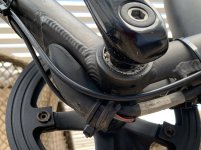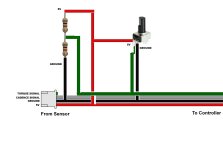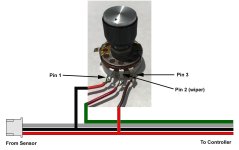rick_p
100 W
Hello,
I picked up a used, non-operational iZip E3 Dash, the price and the challenge to get it back on the road were too great to resist :wink:
I have been down this road before, and thanks to all the amazing advice, tips and tricks I have received on this forum in the past, I at least knew where to start with troubleshooting.
The symptom; the dreaded blinking red light on the charger, so I knew right away that aside from anything else that might be wrong, there's either a battery or charger problem.
What I have tried/checked so far:
An interesting note to add, and one of the reasons I decided to post this is, after I did the previous tests and attempts to reset the BMS, I got a very low but negative reading at the discharge port. For a second I thought maybe I attached the charger to the discharge port with the polarity reversed, but then I remembered that I checked the voltage during the one minute the charger was attached to make sure it was getting a charge, and it was connected correctly.
Any and all ideas and advice is much appreciated. I have reason to believe this bike has low mileage, so this battery is probably worth trying to fix.
I picked up a used, non-operational iZip E3 Dash, the price and the challenge to get it back on the road were too great to resist :wink:
I have been down this road before, and thanks to all the amazing advice, tips and tricks I have received on this forum in the past, I at least knew where to start with troubleshooting.
The symptom; the dreaded blinking red light on the charger, so I knew right away that aside from anything else that might be wrong, there's either a battery or charger problem.
What I have tried/checked so far:
- With battery off the bike and no charger, there is zero voltage at the charge and discharge ports, and obviously no lights at charge level indicator on the battery.
- I attempted to test the output voltage of factory charger, but I think this charger is one that doesn't put out any voltage until there is a load. The charger has a green light before plugging it into the battery, it blinks red when plugged into the battery, and there is zero voltage at the discharge port with the charger left plugged in.
- I tried a known working charger with the same specifications and plug type. When I plugged this charger in, the light stayed green on the charger instead of changing to amber and the fan turning on as it normally does when it's charging a battery. There was 54 volts at the discharge port with the charger plugged in.
- I tried a soft reset on the BMS by charging the battery for a only a minute via the discharge port, but no luck there, it still doesn't charge.
- I opened the battery case and everything looks new inside, there's no indication of any short circuits or water damage or anything like that. Due to the (clear) shrink wrap I wasn't able to get to the BMS yet to try a hard reset, and this is where I stopped.
An interesting note to add, and one of the reasons I decided to post this is, after I did the previous tests and attempts to reset the BMS, I got a very low but negative reading at the discharge port. For a second I thought maybe I attached the charger to the discharge port with the polarity reversed, but then I remembered that I checked the voltage during the one minute the charger was attached to make sure it was getting a charge, and it was connected correctly.
Any and all ideas and advice is much appreciated. I have reason to believe this bike has low mileage, so this battery is probably worth trying to fix.






